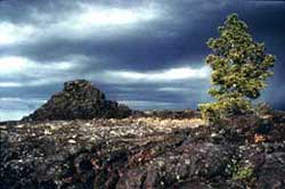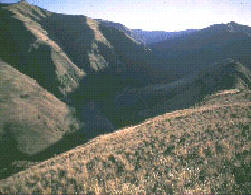
and
![]()

Northern Semi-Arid
Network

 |
and |
|
 |
Northern Semi-Arid |
 |
|
Vital Signs Monitoring |
Your input is important
This web page is designed to give you the opportunity to comment on key components of the conceptual model developed by the Northern Semi-Arid Network advisory group. To see the complete report of their Vital Signs Monitoring Workshop held on April 16th and 17th, 2002, you may click here to open (Adobe Acrobat pdf file -- 584Mb).
Please review the material on this page and enter your comments and ratings where appropriate. Your thoughts and comments are very welcome and it should only take you about ten minutes to complete the questions below.
Northern Semi-Arid Network
The parks in this network are:
|
|
|
|
|
|
|
|
The Conceptual Model of Network-wide Vital Signs
Keep in mind that the Conceptual Model for Vital Signs Monitoring was designed
specifically to address vital signs that are common to all of the parks in the
Northern Semi-Arid Network.
DRIVERS: The model displays four columns. The first column shows DRIVERS, which are overriding conditions which are affecting the whole network. These primarily include the influence which external changes in land use practices and land conversions exert on the parks. In addition, park visitation and climate change were seen as two broad influences which will drive the system.
STRESSORS: Column two shows the STRESSORS, which are specific events or altered conditions which have resulted from the drivers. These manifest their stress on the ecosystems within the Northern Semi-Arid Network parks causing both short term and long term impacts on the parks' ecosystem functions, structure, and processes.
ECOSYSTEM EFFECTS: Column three shows the seven specific changes which are causing unacceptable impacts in network parks, such as altered riparian wetland plant communities or exclusion of native plant species.
PARK COMMUNITY/COMPONENT. The last column shows a series of seven park communities and components which are being altered by the ecosystem effects. For each community or component, vital sign indicators have been written that will allow managers to monitor or track the health of the ecosystem of the Northern Semi-Arid Network parks. After you comment on the conceptual model you will have the opportunity to rank individual Vital Signs which are the key elements that indicate the health of the park ecosystem.
Please examine the model and then tell us whether you have any suggestions for additions, deletions or amendments to the drivers, stressors, ecosystem effects, or park community components displayed in the model. You may write as much as you like in the text boxes provided below the model.
This Internet survey was developed by professor Ed Krumpe at the University
of Idaho. If you have any problems feel free
to contact him at:
Dr. Ed Krumpe
Department of Resource Recreation
and Tourism.
College of Natural Resources
University of Idaho
Moscow, ID 83844-1139
Email: edkrumpe@uidaho.edu Phone: 208-885-7428.
5/19/2002